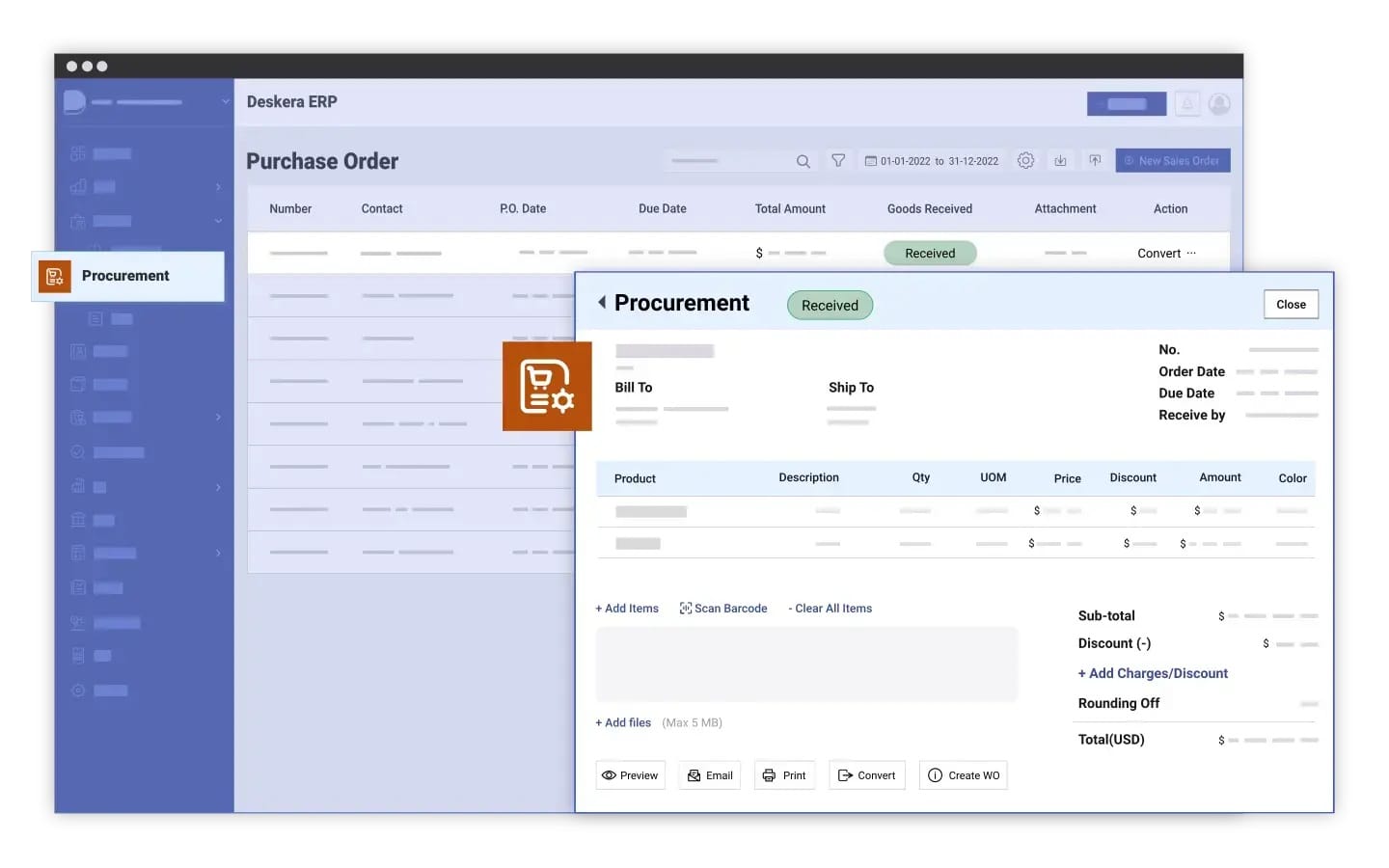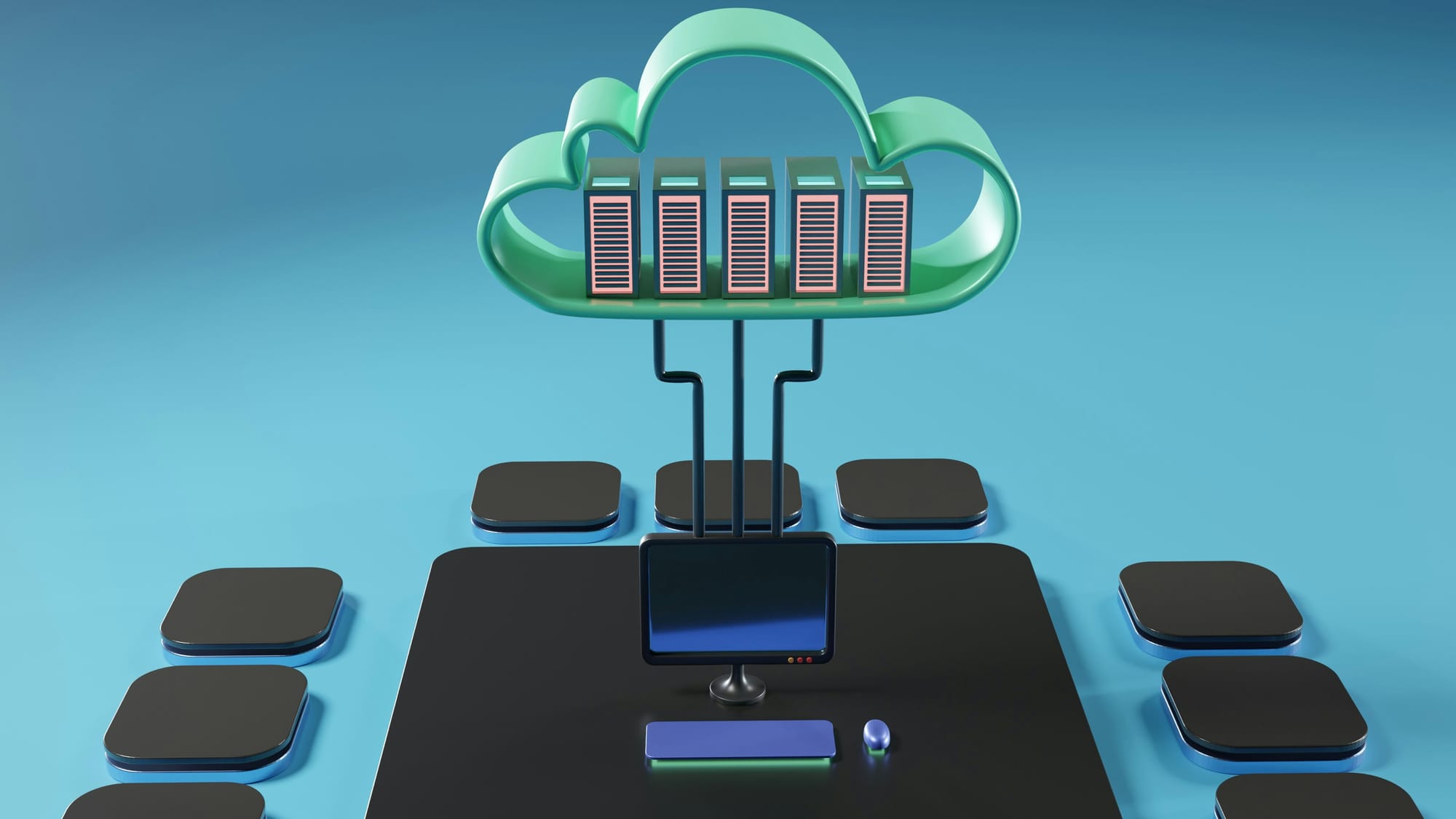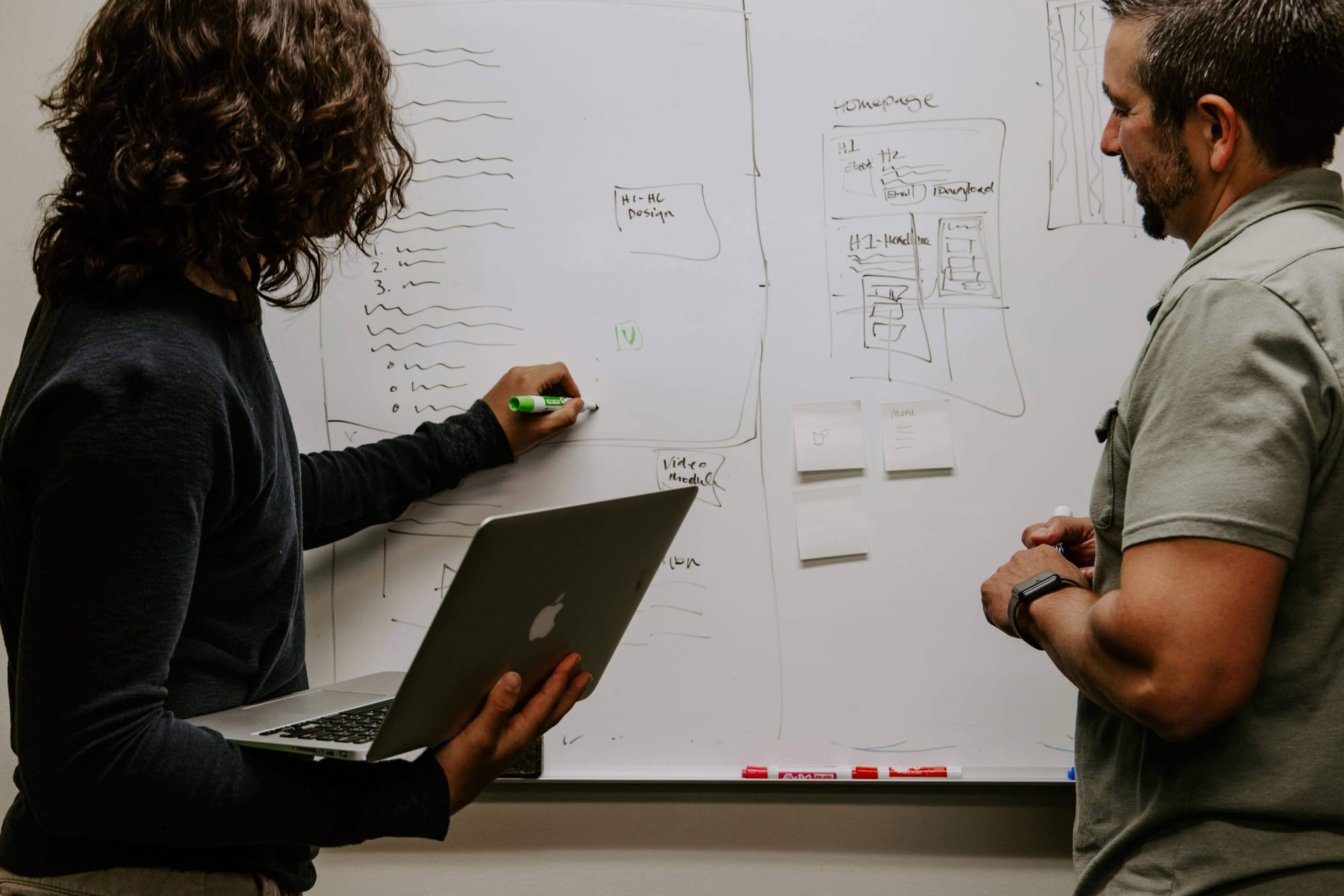Have you ever wondered how businesses manage procurement from start to finish while keeping costs under control? The answer lies in Source-to-Settle (S2S)—a comprehensive procurement lifecycle that ensures seamless sourcing, purchasing, receiving, invoicing, and payment processing.
Whether you're a small business or a large enterprise, an efficient S2S process helps streamline operations, enhance supplier relationships, and maintain financial accuracy.
Source-to-Settle is more than just a series of procurement steps; it’s a strategic approach to optimizing business spending and supplier collaboration. By automating and standardizing procurement activities, companies can reduce inefficiencies, eliminate manual errors, and gain better visibility into their financial workflows.
Organizations that implement a well-structured S2S framework can minimize procurement risks, negotiate better contracts, and maintain compliance with industry regulations.
Modern ERP solutions play a crucial role in enhancing the Source-to-Settle process by integrating procurement, finance, and inventory management. Deskera ERP is one such platform that offers real-time procurement tracking, automated purchase orders, AI-driven insights, and seamless supplier management.
Its cloud-based system enables businesses to optimize procurement workflows, improve spend analysis, and ensure compliance, making it an ideal choice for companies looking to modernize their purchasing process.
In this guide, we’ll take an in-depth look at the Source-to-Settle lifecycle, covering each stage from supplier selection to payment processing. We’ll also explore the benefits, challenges, and best practices for implementing an effective S2S strategy.
Whether you're new to procurement or looking to refine your existing processes, this guide will provide valuable insights into making your procurement operations more efficient and cost-effective.
What is Source-to-Settle (S2S)?
Source-to-Settle (S2S) is the end-to-end procurement process that covers everything from sourcing and supplier selection to final payment and financial settlement.
It ensures a streamlined, automated approach to procurement, supplier management, and financial transactions, allowing businesses to optimize costs, improve efficiency, and maintain compliance.
Key Stages of Source-to-Settle (S2S)
- Sourcing – Identifying, evaluating, and selecting suppliers.
- Procurement – Creating purchase requisitions and orders.
- Receiving & Inventory Management – Verifying and tracking deliveries.
- Invoicing & Payment Processing – Matching invoices, approvals, and payments.
By leveraging S2S solutions like ERP systems, businesses can eliminate manual errors, enhance visibility into procurement spending, and establish better supplier relationships. Modern platforms, such as Deskera ERP, integrate procurement, finance, and inventory management, ensuring a seamless and automated Source-to-Settle workflow.
Difference Between Source-to-Settle (S2S) and Procure-to-Pay (P2P)
Both Source-to-Settle (S2S) and Procure-to-Pay (P2P) are essential procurement processes, but they differ in scope and functionality.
Using an ERP system like Deskera, businesses can integrate both S2S and P2P workflows, ensuring seamless supplier management, procurement automation, and financial accuracy.
The Key Stages of the Source-to-Settle Process
The Source-to-Settle (S2S) process is a structured approach that covers the full procurement lifecycle—from sourcing suppliers to final payment processing. This framework ensures efficiency, cost control, and compliance across procurement activities.
Below is an in-depth breakdown of each key stage.
A. Sourcing
1. Supplier Identification and Research
- Conducting market research to identify potential suppliers based on industry needs.
- Utilizing supplier directories, trade shows, and digital platforms to discover new vendors.
- Evaluating supplier capabilities based on quality, pricing, scalability, and sustainability practices.
- Conducting risk assessments to ensure suppliers meet regulatory and compliance requirements.
2. Request for Proposal (RFP) & Request for Quotation (RFQ) Management
- Understanding the difference between RFPs (qualitative evaluation of suppliers) and RFQs (cost-based bidding process).
- Best practices for drafting clear, detailed RFPs and RFQs to attract competitive bids.
- Leveraging procurement software to automate bid solicitation, tracking, and evaluation.
- Establishing a structured process for supplier selection based on pricing, service levels, and reliability.
3. Supplier Negotiation and Contracting
- Implementing negotiation strategies that balance cost-effectiveness and supplier partnerships.
- Defining key contract terms, including pricing structures, delivery timelines, service levels, and penalties.
- Ensuring legal compliance in contract agreements to mitigate procurement risks.
- Utilizing contract management software to track renewals, amendments, and obligations.
4. Supplier Onboarding and Relationship Management
- Conducting due diligence and compliance checks before onboarding new suppliers.
- Setting up supplier profiles, payment terms, tax compliance, and banking details in the procurement system.
- Establishing clear communication channels and supplier collaboration tools for ongoing relationship management.
- Implementing supplier performance reviews to track contract adherence and continuous improvement.
B. Procurement
1. Purchase Order (PO) Creation and Approval
- Automating purchase order (PO) generation to reduce errors, processing time, and manual workload.
- Aligning PO creation with budget control, approval hierarchies, and spending limits.
- Ensuring seamless integration between procurement and accounting systems for accurate financial reporting.
2. Ensuring Procurement Policy Compliance
- Implementing internal procurement policies to regulate spending and approval processes.
- Preventing maverick spending (unauthorized purchases) by enforcing procurement guidelines.
- Training employees on procurement best practices and financial accountability.
3. Managing Supplier Performance
- Defining Key Performance Indicators (KPIs) such as on-time delivery, defect rates, and service quality.
- Conducting regular supplier audits and performance evaluations to ensure adherence to contract terms.
- Establishing a supplier feedback mechanism for continuous improvement and risk mitigation.
C. Receiving and Inventory Management
1. Goods Receipt and Inspection
- Implementing quality control protocols to inspect received goods against specifications.
- Managing defective, damaged, or incorrect shipments with standardized return processes.
- Leveraging automated receiving systems to track incoming shipments in real time.
2. Inventory Tracking and Warehouse Integration
- Using inventory management software to maintain accurate stock levels.
- Reducing stockouts and overstocking through real-time tracking and demand forecasting.
- Integrating warehouse systems with procurement platforms to enhance visibility and efficiency.
3. Handling Returns and Discrepancies
- Establishing a structured process for returns, replacements, and supplier coordination.
- Resolving discrepancies between purchase orders, invoices, and received goods through reconciliation procedures.
- Automating return authorizations and refund processing to maintain supplier accountability.
D. Invoicing and Payment Processing
1. Three-Way Matching: PO, Receipt, and Invoice
- Matching purchase orders (POs), receipts, and supplier invoices to prevent fraud and discrepancies.
- Automating invoice validation processes to enhance accuracy and payment efficiency.
- Using ERP systems like Deskera to streamline invoice approvals and tracking.
2. Managing Payment Schedules and Supplier Agreements
- Negotiating early payment discounts and extended payment terms to optimize cash flow.
- Handling payment disputes, reconciliations, and supplier inquiries efficiently.
- Implementing automated payment solutions for secure and timely transactions.
3. Compliance and Financial Auditing in Payments
- Ensuring adherence to tax regulations, financial reporting standards, and compliance requirements.
- Conducting regular audits of supplier transactions to detect and prevent fraud.
- Maintaining audit trails for financial transparency and risk management.
A well-structured Source-to-Settle (S2S) process enables businesses to optimize procurement operations, improve supplier collaboration, and ensure financial efficiency.
By leveraging ERP solutions like Deskera, companies can automate S2S workflows, enhance visibility into procurement activities, and drive cost savings. Investing in a seamless, data-driven procurement approach ensures long-term business growth and sustainability.
Benefits of Implementing Source-to-Settle
Many businesses operate with fragmented procurement and accounts payable processes, leading to inefficiencies, inconsistent data, and limited visibility into enterprise spending.
A well-structured source-to-settle process integrates sourcing, procurement, invoicing, and payment functions, enhancing overall financial and operational performance. By automating workflows and optimizing supplier relationships, businesses can unlock strategic advantages.
1. Effective Supply Chain Management
A structured source-to-settle approach helps businesses evaluate and onboard suppliers efficiently, ensuring that procurement decisions align with company goals and compliance requirements.
Supplier relationship management (SRM) tools track performance metrics, provide alerts for contract renewals or compliance risks, and enhance supply chain resilience.
Additionally, real-time supplier insights help procurement teams respond proactively to potential disruptions, improving agility in supply chain operations.
2. Increased Efficiency
By automating and standardizing procurement workflows, businesses eliminate redundant processes and minimize manual interventions. Integrated systems improve visibility across departments, accelerating purchase approvals, invoice reconciliation, and payment processing.
With centralized procurement data, teams can make faster sourcing decisions and optimize workflows to focus on high-value strategic activities, such as supplier negotiations and market analysis.
3. Cost Savings
Strategic sourcing and supplier negotiations drive cost efficiencies by securing better pricing, bulk discounts, and optimized payment terms. Automation reduces administrative overhead, lowering operational expenses tied to manual approvals and invoice processing.
Additionally, streamlined procurement processes minimize the risks of duplicate purchases, overpayments, and missed early-payment discounts, maximizing financial efficiency.
4. Standardized and Streamlined Contracting
A unified source-to-settle framework enables businesses to standardize contract creation, approval workflows, and compliance tracking. Predefined contract templates and automated reminders prevent inconsistencies across supplier agreements while ensuring all terms align with corporate policies. This structured approach improves supplier accountability, reduces legal risks, and enhances negotiation leverage.
5. Improved Supplier Relationships
A well-integrated source-to-settle system fosters collaboration with suppliers by enabling transparent communication, performance monitoring, and issue resolution.
Real-time visibility into supplier reliability, order accuracy, and compliance levels helps procurement teams build long-term partnerships. A proactive approach to supplier engagement ensures timely deliveries, mitigates risks, and strengthens supply chain continuity.
6. Enhanced Financial Control and Visibility
Centralized procurement and payment data provide complete visibility into enterprise-wide spending patterns, helping finance teams enforce compliance with approved vendor agreements.
Automated tracking mechanisms flag unauthorized purchases, control budget deviations, and optimize cash flow management.
With enhanced financial oversight, organizations can reduce procurement fraud, improve audit readiness, and align purchasing decisions with corporate financial objectives.
Challenges in Source-to-Settle Implementation
While implementing a source-to-settle (S2S) process offers significant benefits, businesses often face several challenges that can hinder its effectiveness.
From technological integration hurdles to resistance from stakeholders, organizations must proactively address these issues to achieve seamless procurement and payment operations.
1. Technology Integration Complexities
One of the primary challenges in source-to-settle implementation is integrating new systems with existing enterprise resource planning (ERP) and financial software.
Legacy systems may lack compatibility with modern procurement solutions, leading to data silos and inefficiencies. Ensuring seamless integration requires robust APIs, middleware solutions, and cross-platform data synchronization, which can be time-consuming and costly.
2. Resistance to Change
Employees and stakeholders accustomed to traditional procurement processes may resist adopting automated workflows. Procurement, finance, and supplier management teams may fear disruptions, loss of control, or additional complexity.
Overcoming this challenge requires comprehensive training, change management initiatives, and clear communication on the benefits of automation.
3. Data Accuracy and Standardization
A successful source-to-settle process relies on accurate and standardized data across procurement, finance, and supplier management systems. Inconsistent or incomplete supplier records, contract details, and invoice data can lead to errors, delays, and compliance risks.
Businesses must implement data governance policies and validation mechanisms to ensure accuracy in vendor information, purchase orders, and payments.
4. Supplier Onboarding and Compliance
Onboarding suppliers into a new system can be a cumbersome process, especially for organizations with a diverse and global supply base. Ensuring supplier compliance with procurement policies, contractual terms, and regulatory requirements can be challenging.
Automated onboarding tools and supplier self-service portals can help streamline the process, but supplier engagement and education remain critical to successful adoption.
5. Process Standardization Across Departments
Different departments within an organization may follow distinct procurement, invoicing, and payment workflows, leading to inconsistencies in the source-to-settle process.
Standardizing workflows across business units while maintaining flexibility for unique requirements can be difficult. Companies must strike a balance between automation and adaptability to ensure smooth operations.
6. Managing Maverick Spending
Despite having an integrated procurement system, unauthorized purchases or off-contract spending (maverick spending) can still occur. Employees may bypass approved procurement channels, leading to higher costs, compliance risks, and inefficiencies. Enforcing spend controls, implementing approval workflows, and leveraging real-time spend analytics can help mitigate this challenge.
7. Compliance and Regulatory Challenges
Procurement processes must align with various industry regulations, tax requirements, and financial reporting standards. Non-compliance with procurement policies or supplier contract terms can result in legal and financial repercussions. Organizations need a robust compliance framework, regular audits, and automated monitoring tools to ensure adherence to regulatory requirements.
8. Long Implementation Timelines and Costs
Implementing a source-to-settle system involves multiple stakeholders, technology upgrades, and process reengineering, leading to extended implementation timelines and high costs. Businesses must allocate adequate resources, budget for unexpected challenges, and develop a phased rollout plan to ensure a smooth transition without major operational disruptions.
By addressing these challenges proactively, organizations can successfully implement a source-to-settle process that enhances procurement efficiency, supplier collaboration, and financial control.
Best Practices for a Successful Source-to-Settle Process
Implementing a source-to-settle (S2S) process can deliver substantial benefits, but success depends on careful planning, execution, and continuous optimization. Organizations must adopt best practices to ensure a seamless transition and drive long-term value.
Leveraging Automation and AI for Procurement
Automation and artificial intelligence (AI) play a crucial role in modernizing the source-to-settle process.
AI-Driven Supplier Selection and Risk Assessment
- AI algorithms can analyze historical data, supplier performance, and market trends to help organizations identify the best suppliers based on cost, quality, and reliability.
- AI-powered risk assessment tools can evaluate supplier financial health, geopolitical risks, and compliance with regulatory requirements to reduce sourcing risks.
Automating Invoice Matching and Payment Processing
- Automated three-way matching (invoice, purchase order, and receipt) ensures accuracy in payments and prevents fraudulent transactions.
- AI-enabled accounts payable solutions can detect anomalies, optimize payment schedules, and automate approval workflows to improve efficiency.
Establishing a Robust Supplier Management Strategy
Effective supplier management ensures that procurement remains cost-effective, risk-free, and compliant with business needs.
Supplier Scorecards and Performance Evaluations
- Implementing scorecards to track supplier performance based on key metrics such as delivery times, quality control, and pricing consistency.
- Regular evaluations ensure suppliers meet agreed-upon standards and help in renegotiating contracts for better terms.
Reducing Supplier Risks with Continuous Monitoring
- Continuous tracking of supplier compliance, financial stability, and operational capacity using automated monitoring systems.
- AI-driven alerts notify procurement teams of any potential supplier issues before they impact business operations.
Aligning Procurement with Business Objectives
A successful S2S process must align with the broader goals of the company to drive value and efficiency.
Ensuring Procurement Strategy Supports Company Goals
- Procurement decisions should be aligned with financial, operational, and sustainability goals.
- Engaging stakeholders from finance, operations, and supply chain teams ensures that sourcing decisions drive overall business value.
Streamlining Procurement for Agility and Adaptability
- Agile procurement practices help businesses respond to market changes, supplier disruptions, and shifting customer demands.
- Implementing dynamic pricing models and real-time contract adjustments keeps procurement adaptable to economic shifts.
Implementing Real-Time Procurement Analytics
Analytics can help organizations make data-driven procurement decisions and optimize performance.
Using Predictive Analytics for Better Decision-Making
- Predictive analytics can forecast demand, identify cost-saving opportunities, and optimize supplier negotiations.
- AI-driven insights help procurement teams anticipate market fluctuations and plan accordingly.
Tracking Procurement Performance with Dashboards
- Real-time dashboards display procurement KPIs such as cost savings, supplier performance, order accuracy, and processing times.
- Interactive dashboards provide leadership with insights into spend trends, contract compliance, and potential risks.
Choosing the Right Technology and Partners
The integration of S2S solutions across procurement, finance, and supplier management systems is critical for success.
Key Considerations for Selecting the Right Solution:
- Ensure seamless integration with existing ERP and financial systems to eliminate data silos.
- Choose cloud-based procurement solutions with AI and automation capabilities for improved efficiency.
- Opt for solutions with built-in compliance monitoring and supplier collaboration tools.
The Role of Technology Partners
- Partnering with experienced solution providers ensures smooth implementation and ongoing support.
- Vendors with industry-specific expertise can offer tailored solutions to meet business needs.
Training and Supporting End Users
The effectiveness of an S2S implementation depends on user adoption and proficiency in utilizing the system.
Developing a Comprehensive Training Plan
- Training should cater to different user groups, including procurement teams, finance staff, and senior management.
- Offer multiple training formats, such as in-person workshops, self-paced e-learning modules, and interactive webinars.
Ensuring Ongoing Support and Continuous Learning
- Establish a help desk for user queries and technical assistance.
- Conduct periodic refresher courses and training sessions on new system features.
- Use user experience surveys to identify pain points and improve system usability.
Strengthening Compliance and Risk Management
Regulatory compliance and risk mitigation are crucial for an effective S2S process.
Ensuring Procurement Compliance
- Automating contract enforcement and purchase approvals reduces compliance risks.
- Regular audits and AI-powered anomaly detection help maintain procurement integrity.
Implementing Risk Mitigation Strategies
- Establish contingency plans for supplier disruptions to maintain business continuity.
- Use blockchain technology for secure and transparent supplier transactions.
A well-executed source-to-settle strategy delivers cost savings, operational efficiency, and risk mitigation. By leveraging automation, optimizing supplier management, aligning procurement with business objectives, and investing in the right technology, organizations can maximize the value of their procurement processes. Proper training and compliance measures further ensure successful adoption and long-term sustainability.
Source-to-Settle vs. Procure-to-Pay: Choosing the Right Model for Your Business
Selecting the right procurement model is crucial for optimizing efficiency, controlling costs, and aligning with business goals. While both source-to-settle (S2S) and procure-to-pay (P2P) serve key procurement functions, they differ in scope, strategic focus, and implementation complexity.
Here are the key factors to consider when deciding between the two approaches:
Choose Source-to-Settle If:
- You prioritize strategic sourcing, supplier relationship management, and procurement optimization.
- You aim to achieve cost savings through strategic supplier negotiations.
- Your organization has a mature, centralized procurement function and manages complex supply chains.
- You handle a large, diverse supplier base that plays a strategic role in your operations.
- You have robust spend analytics and business intelligence for informed decision-making.
- Your team has strong analytical capabilities to derive actionable insights from procurement data.
- Your business utilizes a comprehensive suite of procurement technologies, including sourcing, contract management, and supplier management tools.
- You are willing to invest in IT resources, system integration, and ongoing maintenance.
- Your procurement model requires cross-functional collaboration and extensive stakeholder buy-in.
- You are prepared to implement change management strategies to drive adoption across departments.
Choose Procure-to-Pay If:
- You prioritize operational efficiency and strong financial controls in procurement.
- Your primary goal is to reduce administrative costs rather than engage in strategic supplier negotiations.
- You operate in a less mature or decentralized procurement environment.
- You manage a smaller, less complex supplier portfolio with fewer strategic considerations.
- You rely on operational data and transactional insights rather than advanced spend analytics.
- Your team has limited analytical expertise for procurement data interpretation.
- You need a solution that integrates easily with your existing ERP systems.
- You have a limited IT budget and prefer minimal ongoing system maintenance.
- You want an easier-to-implement solution that requires minimal change management.
- Your organization operates in siloed procurement structures and does not require extensive cross-functional collaboration.
How Technology Enhances the Source-to-Settle Process
The source-to-settle (S2S) process encompasses every stage of procurement, from sourcing suppliers to final payment. With increasing business complexities, technology plays a crucial role in optimizing efficiency, reducing costs, and ensuring compliance throughout the procurement lifecycle.
Here’s how digital transformation enhances the S2S process:
1. AI and Automation for Smarter Procurement
- AI-driven Supplier Selection – Advanced algorithms analyze supplier performance, risk factors, and historical data to identify the most reliable partners.
- Automated Contract Management – AI-powered tools streamline contract creation, negotiation, and compliance tracking, reducing manual errors.
- Invoice Matching and Payment Processing – Automated invoice validation speeds up approvals, ensuring accurate and timely payments.
2. Cloud-Based Procurement Platforms
- Real-Time Collaboration – Cloud solutions enable procurement teams, suppliers, and finance departments to work together seamlessly.
- Data Centralization – A unified platform consolidates procurement data, enhancing visibility and decision-making.
- Scalability and Flexibility – Cloud-based tools adapt to growing business needs, supporting global procurement operations.
3. Predictive Analytics for Strategic Decision-Making
- Spend Analysis – AI-powered analytics provide insights into procurement trends, helping organizations optimize budgets.
- Risk Mitigation – Predictive analytics identify supply chain disruptions before they occur, allowing proactive risk management.
- Performance Dashboards – Real-time tracking of procurement KPIs ensures continuous process improvements.
4. Blockchain for Enhanced Transparency and Security
- Immutable Transaction Records – Blockchain technology ensures secure, tamper-proof documentation of procurement transactions.
- Smart Contracts – Automated contract execution based on predefined conditions eliminates delays and disputes.
- Fraud Prevention – Decentralized verification enhances trust and security in supplier relationships.
5. Integration with ERP and Financial Systems
- Seamless Data Flow – Connecting S2S tools with ERP systems ensures accurate financial reporting and audit trails.
- Automated Budget Compliance – Integrated solutions prevent overspending by aligning purchases with budget constraints.
- Improved Cash Flow Management – Real-time visibility into payables helps organizations optimize working capital.
How Deskera ERP Optimizes the Source-to-Settle Process
Deskera ERP provides a comprehensive, cloud-based solution that enhances the source-to-settle (S2S) process by automating procurement, improving supplier management, and ensuring financial accuracy. Here’s how Deskera ERP can help:

1. Streamlined Procurement and Sourcing
- Automated Purchase Orders (POs) – Generate and track POs with minimal manual intervention.
- Supplier Management – Maintain a centralized supplier database with performance tracking and automated reordering.
- AI-Driven Sourcing – Identify and onboard the best suppliers using data-driven insights.
2. Enhanced Financial Management
- Seamless Invoice Matching – Automate three-way matching between POs, invoices, and receipts to prevent discrepancies.
- Real-Time Budget Tracking – Gain visibility into procurement spending and ensure compliance with financial plans.
- Integrated Accounting – Sync procurement data with Deskera’s accounting module for accurate financial reporting.
3. Advanced Analytics and Reporting
- Customizable Dashboards – Monitor procurement performance, supplier efficiency, and financial metrics.
- Predictive Analytics – Leverage AI-powered insights to forecast demand and optimize purchasing strategies.
- Compliance and Audit Readiness – Generate automated reports to meet regulatory and internal audit requirements.
4. Cloud-Based Collaboration and Scalability
- Anywhere, Anytime Access – Manage procurement processes from any device with cloud-based accessibility.
- Multi-User Collaboration – Enable seamless communication between procurement, finance, and supplier teams.
- Scalability for Growth – Easily adapt to changing business needs and expanding supply chains.
Key Takeaways
- A well-implemented source-to-settle (S2S) process enhances procurement efficiency, strengthens supplier relationships, and improves financial transparency, driving long-term business success.
- Each step of the S2S process—from sourcing and procurement to payment—must be seamlessly integrated to eliminate inefficiencies and ensure compliance.
- An optimized S2S process leads to cost savings, reduced procurement risks, increased efficiency, and better supplier collaboration, ultimately strengthening the supply chain.
- Common challenges such as data silos, supplier risks, and resistance to change can hinder implementation, making automation, integration, and change management essential for success.
- Best Practices for a Successful Source-to-Settle Process
- Leveraging Automation and AI for Procurement: AI-powered tools improve supplier selection, risk assessment, and invoice automation, reducing errors and enhancing efficiency.
- Establishing a Robust Supplier Management Strategy: Implementing supplier scorecards and continuous monitoring ensures high performance, reduces risks, and strengthens partnerships.
- Aligning Procurement with Business Objectives: Procurement strategies should align with broader company goals to enhance agility, adaptability, and long-term profitability.
- Implementing Real-Time Procurement Analytics: Predictive analytics and dashboards enable data-driven decision-making, helping businesses optimize spending and supplier performance.
- Businesses should opt for source-to-settle if they prioritize strategic sourcing and supplier management, while procure-to-pay is better suited for organizations focusing on operational efficiency and financial controls.
- Advanced ERP systems, AI, cloud computing, and analytics help businesses automate workflows, improve data visibility, and enhance procurement efficiency.
- Deskera ERP offers an integrated procurement and finance solution that streamlines sourcing, automates invoice processing, enhances supplier collaboration, and provides real-time procurement insights.
Related Articles












